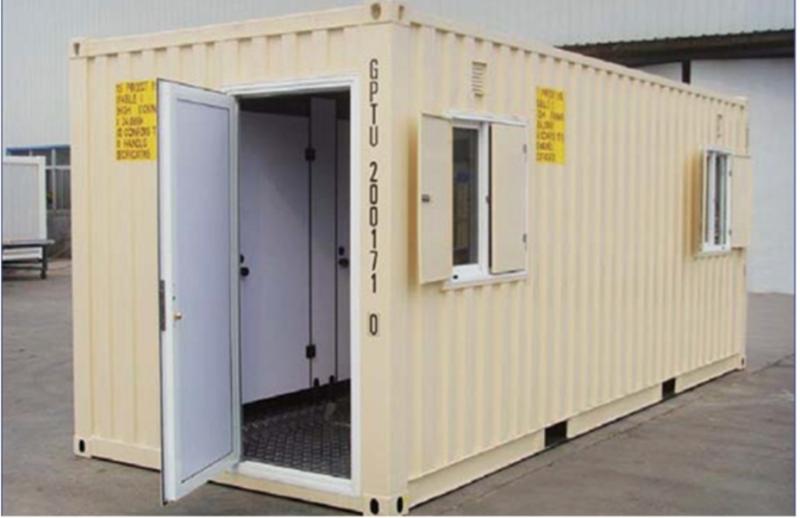Drone Jammer Guns and Their Role in Modern Security
Drones are becoming increasingly sophisticated, making them valuable tools for both legitimate purposes and unauthorized surveillance. Their ability to capture audio, video, and other sensitive data from a distance has raised concerns across various sectors, including government, corporate, and public events. In response, effective countermeasures, such as Drone Jammer Guns, have become essential for neutralizing these threats by disrupting drone control signals. However, before deploying jamming technologies, it's critical to identify and track drones in real-time. Drone RF Detection plays a key role in this process by detecting the radio frequencies used by drones, allowing security personnel to assess the threat and deploy appropriate jamming countermeasures. This integrated approach ensures comprehensive airspace protection.
How Drone Jammer Guns Work
Drone Jammer Guns are essential tools in modern drone defense systems, designed to neutralize unauthorized or potentially dangerous drones by disrupting their communication with their operator. These guns work by emitting powerful radio frequency (RF) signals that overwhelm the communication channels between the drone and its controller, forcing the drone to either land, return to its operator, or lose control. To understand how Drone Jammer Guns effectively block communication, it’s important to explore their operation in detail.
Blocking Communication Between Drones and Controllers
Most commercial and consumer drones operate using specific radio frequencies to communicate with their controllers. Two of the most common frequency bands used are 2.4 GHz and 5.8 GHz, which are typically employed for sending control commands, receiving live video feeds, and transmitting data. When a drone jammer gun is activated, it targets these exact frequencies by emitting a high-power signal that floods the airwaves. This signal essentially "drowns out" the communication between the drone and its controller, making it impossible for the operator to send commands or receive feedback from the drone.
The disruption caused by the jammer affects the drone in several ways depending on the model and its fail-safe programming. Most drones are programmed to respond to signal loss in one of three ways:
1. Return-to-home (RTH): Many drones are equipped with GPS and will automatically return to their takeoff point if communication is lost.
2. Hover in place: Some drones are programmed to hover in their current position until communication is reestablished.
3. Emergency landing: In the absence of a control signal, some drones will initiate an automatic descent and landing.
Drone jammer guns are specifically engineered to target multiple frequencies simultaneously, covering a broad spectrum to ensure that even if the drone switches to a different frequency, it will still be jammed. This multi-frequency targeting is critical because advanced drones often use frequency-hopping techniques, which means they switch between different frequencies to maintain a stable connection. By jamming a wide range of frequencies, the gun can effectively neutralize these evasive tactics.
Use of Drone RF Detection Systems for Precise and Effective Intervention
While Drone Jammer Guns are powerful tools, their success depends heavily on being able to accurately locate and target the drone before deploying the jamming signal. This is where Drone RF Detection systems come into play. RF detection systems are designed to identify the radio frequency signals emitted by drones and their controllers, providing real-time information about the drone's location, altitude, direction, and speed.
RF detection works by scanning the airwaves for any signals that fall within the frequency ranges commonly used by drones. Once an RF signal is detected, the system can triangulate the source of the signal and determine the exact position of the drone. This allows security personnel to track the drone’s movements and decide when and where to use the jammer gun.
By integrating RF detection with jammer guns, security teams can respond more effectively to drone threats. The RF detection system first locates and identifies the drone, allowing operators to assess the situation and determine whether the drone poses a risk. Once confirmed, the Drone Jammer Gun can be aimed precisely at the drone’s location to block communication with its controller. This targeted approach ensures that only the threat is neutralized, reducing the risk of interference with other nearby devices that may be using the same frequencies, such as Wi-Fi networks or communication systems.
In high-security environments like airports, military zones, or critical infrastructure facilities, the combination of RF Detection Systems and Drone Jammer Guns ensures that unauthorized drones are detected early and dealt with swiftly. The real-time data provided by RF detection allows security personnel to intervene before the drone can capture sensitive data or cause harm.
Drone Jammer Guns are an essential part of any comprehensive drone defense strategy, working by disrupting communication between drones and their operators through targeted RF jamming. When combined with RF Detection Systems, these guns provide a precise, effective means of neutralizing unauthorized drones, ensuring that security teams can respond to threats in real-time while minimizing collateral interference.
Practical Applications of Jammer Guns
As drone technologies become increasingly sophisticated and accessible, they are being used not only for recreational purposes but also for more nefarious activities such as unauthorized surveillance, smuggling, and even attacks. In response, Drone Jammer Guns have become crucial in various high-security and sensitive environments where the presence of unauthorized drones can pose serious risks. These guns offer an effective way to neutralize drones by disrupting their control signals, making them an essential tool across industries and scenarios that demand heightened security.
Examples of Industries and Scenarios Where Drone Jammer Guns Are Crucial
Airports
Airports are one of the most critical locations where Drone Jammer Guns play an essential role in maintaining safety. Unauthorized drones flying near airports can interfere with flight paths, cause major disruptions, and even result in accidents by colliding with planes. The presence of drones near airports can lead to the temporary shutdown of flight operations, resulting in massive delays and financial losses.
Drone jammer guns are used to quickly neutralize any unauthorized drones that enter restricted airspace, preventing them from interfering with aircraft operations. By blocking the drone’s communication with its operator, jammer guns either force the drone to land or return to its point of origin, ensuring that flights can proceed without the risk of collision or interference. Airports often integrate Drone RF Detection Systems with jammer guns to detect drones early, giving security personnel the ability to neutralize the threat before it enters critical areas.
Military Zones and Critical Infrastructure
In military zones, the use of Drone Jammer Guns is even more critical due to the sensitive nature of operations. Unauthorized drones in military areas can be used for espionage, reconnaissance, or even delivering payloads to cause damage. Whether it’s collecting surveillance footage or attempting to disrupt operations, unauthorized drones can jeopardize national security and safety.
In these scenarios, jammer guns are deployed to protect sensitive installations such as military bases, testing grounds, or restricted airspaces. Drone RF Detection Systems are often the first line of defense, identifying the presence of a drone before it can get too close. Once detected, jammer guns are employed to block communication between the drone and its operator, preventing it from transmitting information or continuing its mission. Additionally, in combat zones, jammer guns can protect troops from drones being used for reconnaissance by enemy forces or as a delivery mechanism for explosives.
Similarly, critical infrastructure like power plants, oil refineries, water treatment facilities, and transportation hubs are vulnerable to drone threats. The disruption or surveillance of these facilities can have catastrophic consequences, including power outages, environmental hazards, or compromised safety protocols. Jammer guns, paired with RF detection, provide these sites with the ability to neutralize drone threats in real time, safeguarding essential services and operations.
Public Events and Large Gatherings
Drone Jammer Guns are also essential in securing public events and large gatherings, where the presence of unauthorized drones poses privacy and safety risks. High-profile events like political rallies, concerts, sporting events, and festivals are often targeted by drones for unauthorized filming, data collection, or in extreme cases, to cause harm. Unauthorized drones can invade the privacy of attendees, capture sensitive audio or video footage, or even be used for disruptive or dangerous activities, such as dropping harmful substances or creating panic.
Jammer guns provide event security teams with a reliable method to neutralize these drones by severing their communication with the operator. This prevents drones from capturing footage, flying dangerously close to crowds, or being used for other malicious purposes. RF Detection Systems can be deployed to continuously monitor the airspace, ensuring that any approaching drones are detected early and neutralized before they can interfere with the event.
Integration with Audio Jammers to Protect Against Drones Equipped with Microphones
One of the newer threats posed by drones is their ability to capture not just video footage but also audio. Many drones are equipped with high-quality microphones that can record conversations from a distance, which is particularly concerning in sensitive environments such as government meetings, boardroom discussions, or private events. To counter this, Drone Jammer Guns are increasingly being integrated with Audio Jammers to offer a comprehensive defense against both video and audio surveillance.
Audio Jammers work by emitting ultrasonic sound waves that interfere with the microphones on drones, making it impossible for them to capture clear audio. This technology is especially important in environments where sensitive discussions are taking place and privacy is paramount. By combining Drone Jammer Guns with Audio Jammers, security teams can neutralize a drone’s ability to record both video and audio data.
For example, in a corporate setting where confidential meetings or product developments are being discussed, unauthorized drones can be used to capture audio recordings of sensitive conversations. Audio Jammers ensure that even if a drone is not immediately detected, it cannot capture usable audio. When paired with Drone Jammer Guns, these two technologies provide comprehensive protection by not only preventing video footage from being captured but also ensuring that sensitive discussions remain private.
Another application of this integration is in high-security government facilities where classified information is often discussed. Audio Jammers and Drone Jammer Guns work together to secure both visual and auditory data, ensuring that drones are unable to compromise national security by recording or transmitting sensitive information.
Drone Jammer Guns are a vital tool across various industries and scenarios where drone threats can have significant security implications. From airports and military zones to public events and critical infrastructure, these guns provide a reliable means of neutralizing unauthorized drones by blocking their communication with operators. When integrated with Audio Jammers, these devices offer a comprehensive defense against both visual and audio surveillance, ensuring that sensitive data and privacy remain protected in high-risk environments. As drone technology continues to evolve, so too will the need for advanced jamming technologies that can safeguard airspace and prevent malicious drone activities.
Frequency Management in Drone Jamming
Effective drone jamming relies heavily on the ability to manage different frequency ranges to ensure that all communication between drones and their controllers is disrupted. Drones operate on a variety of radio frequency (RF) bands, and as drone technology continues to evolve, they are employing more sophisticated communication methods, including frequency hopping and encrypted signals. To maintain control over airspace and protect against unauthorized drone activity, understanding and managing the frequency ranges used by drones is essential. Moreover, combining Drone RF Detection Systems with Audio Jamming Technologies can create a robust defense that safeguards both visual and auditory data from surveillance drones.
The Importance of Managing Different Frequency Ranges for Effective Jamming
Drones typically use a small set of frequency bands to communicate with their controllers, transmit video footage, and send telemetry data. The two most common frequency bands for consumer and commercial drones are 2.4 GHz and 5.8 GHz, which are also widely used for other wireless communication applications, such as Wi-Fi and Bluetooth. However, more advanced drones may operate on less commonly used frequency bands, such as 1.2 GHz, 900 MHz, or even 433 MHz.
To jam a drone effectively, the Drone Jammer Gun must target the exact frequency that the drone is using. This is challenging because drones may employ frequency-hopping spread spectrum (FHSS) technology, which rapidly changes the transmission frequency in a random pattern to avoid being jammed. This makes it difficult to jam a drone by targeting a single frequency. Therefore, modern jammer guns are designed to disrupt a wide range of frequencies simultaneously, ensuring that even if the drone hops to another frequency, the communication will still be interrupted.
In addition to frequency hopping, some high-end drones use encrypted signals to secure their communication with controllers. In such cases, jamming becomes even more challenging because the jammer must not only disrupt the transmission but also account for encryption protocols. To counter these tactics, multi-band jammer guns are deployed. These devices can jam multiple frequency bands at once, from the most common 2.4 GHz and 5.8 GHz to less common bands, ensuring that no matter what communication method the drone uses, it will be neutralized.
Managing different frequency ranges is also critical in environments where other RF devices are in operation, such as airports, military bases, or public events. In these settings, care must be taken to avoid interfering with legitimate RF signals that are vital to operations, such as communications between ground control and aircraft, or Wi-Fi networks providing essential services. Selective jamming technologies are being developed to address this issue, enabling jammer guns to specifically target drones without disrupting other critical RF devices. These jammer guns can identify the unique signal characteristics of a drone and jam only those frequencies while leaving other communications untouched.
How Combining Drone RF Detection and Audio Jamming Technologies Can Enhance Security
While Drone Jammer Guns can effectively neutralize drones by disrupting their communication with controllers, modern drones are increasingly equipped with high-quality microphones that allow them to record audio from a significant distance. This introduces an additional threat, as drones can now capture not only visual data but also sensitive audio conversations. To counter this, Audio Jammers can be combined with Drone RF Detection Systems to create a multi-layered security approach that protects both visual and auditory information.
Drone RF Detection Systems are the first line of defense in this integrated approach. These systems continuously monitor the airspace for RF signals emitted by drones and their controllers. When an unauthorized drone is detected, the system can immediately alert security personnel and provide real-time information about the drone’s location, altitude, speed, and flight path. This early detection is crucial because it allows security teams to deploy countermeasures before the drone enters a sensitive area or begins recording data.
Once the drone is identified, Drone Jammer Guns can be deployed to disrupt the communication between the drone and its operator, neutralizing the threat of visual surveillance. However, if the drone is equipped with a microphone, Audio Jammers are also necessary to prevent it from recording sensitive conversations. Audio jammers emit high-frequency ultrasonic sound waves that interfere with the drone’s microphones, distorting or completely blocking the audio it captures. These sound waves operate outside the range of human hearing, making them ideal for environments where sensitive discussions are taking place, as they do not disturb the people nearby but effectively render any audio recordings unusable.
The combination of RF Detection, Drone Jammer Guns, and Audio Jammers ensures comprehensive protection against drones. RF detection provides real-time situational awareness, allowing security teams to identify and track drones before they become a threat. Drone jammer guns neutralize the drone’s ability to capture video footage or transmit data to its operator. At the same time, audio jammers prevent the drone from recording sensitive conversations, ensuring that no auditory data is compromised.
This integrated approach is particularly important in high-security environments such as government facilities, corporate headquarters, and critical infrastructure sites, where both visual and auditory surveillance can pose significant risks. By combining these technologies, security teams can effectively counter the growing range of drone threats, ensuring that all forms of surveillance, both visual and auditory, are thwarted.
Frequency management is a crucial component of effective drone jamming, as drones operate on a variety of RF bands, often using sophisticated techniques like frequency hopping or encryption. To neutralize these threats, Drone Jammer Guns must be capable of targeting multiple frequencies simultaneously while avoiding interference with other vital RF communications in the area. Furthermore, combining Drone RF Detection Systems with Audio Jammers enhances security by addressing both visual and auditory threats posed by surveillance drones. This multi-layered defense strategy ensures that unauthorized drones are detected early, neutralized efficiently, and prevented from capturing any sensitive information, making it essential for securing airspace in high-risk environments.








Comments